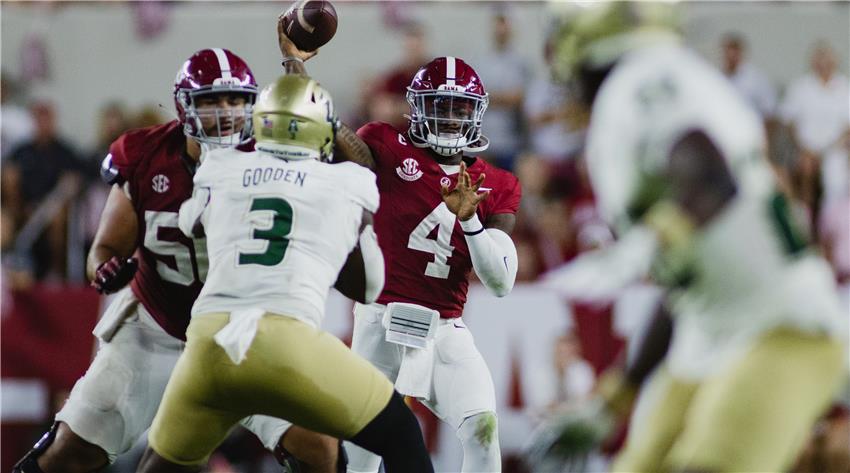
The Rise of the Multi-Position Prospect
Breaking the Mold: A New Draft Prototype
The NFL Draft has long relied on positional archetypes—pocket-passing quarterbacks, downhill linebackers, and shutdown corners. But a new wave of prospects is challenging those boundaries. Increasingly, top college athletes are entering the draft with experience across multiple positions, redefining what it means to be “NFL ready.” These hybrid players are no longer seen as developmental projects; they’re becoming highly coveted chess pieces for coaches hungry for flexibility.
This shift isn’t accidental. It’s rooted in changes in high school and collegiate programs that are embracing positional fluidity as both a tactical advantage and a recruiting strategy. The result is a growing class of athletes who can play offense and defense, drop into coverage or rush the passer, line up in the slot or take snaps at quarterback. They don’t fit neatly into the scouting templates of the past—and that’s precisely the point.
High School Versatility as a Scouting Asset
The path to multi-position dominance often begins before college. Top high school prospects are increasingly encouraged to explore different roles to maximize their recruitment potential. Quarterbacks moonlight as safeties, linebackers rotate in at fullback, and wide receivers take reps at cornerback. This not only helps players understand the game from multiple angles but also showcases athleticism in a variety of game contexts.
Recruiters have taken notice. Many Power Five programs now view two-way experience as a green flag for elite football IQ and coachability. Players who demonstrate adaptability often rise up draft boards, especially when paired with strong Combine performances. For scouts, it’s easier to project a versatile player into different schemes—and it gives NFL teams more options on Day 2 and Day 3 of the draft.
College Programs Leaning Into Hybrids
College coaches are embracing versatility like never before. The emergence of 4-2-5 defenses, positionless offensive sets, and tempo-driven substitutions has opened doors for hybrid athletes to shine. Players like Isaiah Simmons (Clemson) and Derwin James (Florida State) entered the NFL as schematic enigmas—and now they’re setting a precedent.
In 2023, several draft-eligible players mirrored this trend. Linebacker/safety hybrids, tight end/fullback converts, and slot receivers with running back skills blurred the lines between traditional roles. Instead of being forced into a box, these athletes were given the freedom to redefine one. This philosophical change is trickling upward into the NFL, where versatility increasingly equals value.
The Analytics Case for Positional Fluidity
Data backs the growing trend. Advanced metrics suggest that hybrid defenders create more negative plays per snap when compared to single-role defenders in similar situations. Offensively, players who can run, catch, and block across multiple alignments expand playbook potential without necessitating substitutions—crucial for hurry-up offenses.
Front offices are leaning on this data to justify higher draft positions for “tweeners” who might once have slipped due to being “not quite” the prototype. In fact, outlets such as Football Predictions now incorporate positional versatility as a core variable in evaluating player ceilings, especially in later-round projections where scheme fit is everything.
Mental Adaptability as a Differentiator
It’s not just about physical ability. NFL coaches consistently cite mental flexibility as the separator between athletic prospects and true contributors. Players who can absorb multiple playbooks, understand route concepts on both sides of the ball, and quickly transition between roles mid-game are becoming invaluable.
This is especially true on special teams, where a wide skill set can lead to immediate playing time. For fringe players trying to make the 53-man roster, the ability to play gunner, return kicks, and fill in at emergency positions isn’t just helpful—it’s often the reason they stick around.
The New Era of Draft Day Strategy
Front offices are adjusting their draft boards to reflect this evolution. Rather than drafting purely by need or best available, many teams are targeting players who offer schematic versatility. This approach has strategic implications. A third-round pick who can contribute at safety, nickel, and linebacker offers more utility than a traditional backup in one spot.
Teams like the New England Patriots, San Francisco 49ers, and Baltimore Ravens have long valued such adaptability. Now, even franchises once known for rigid schemes are pivoting. The future of roster construction will favor those who can do more with less—both on the field and on the cap sheet.
As the next generation of draft prospects emerges, it’s clear that the ability to play—and think—across positions is no longer a bonus. It’s becoming the baseline.
